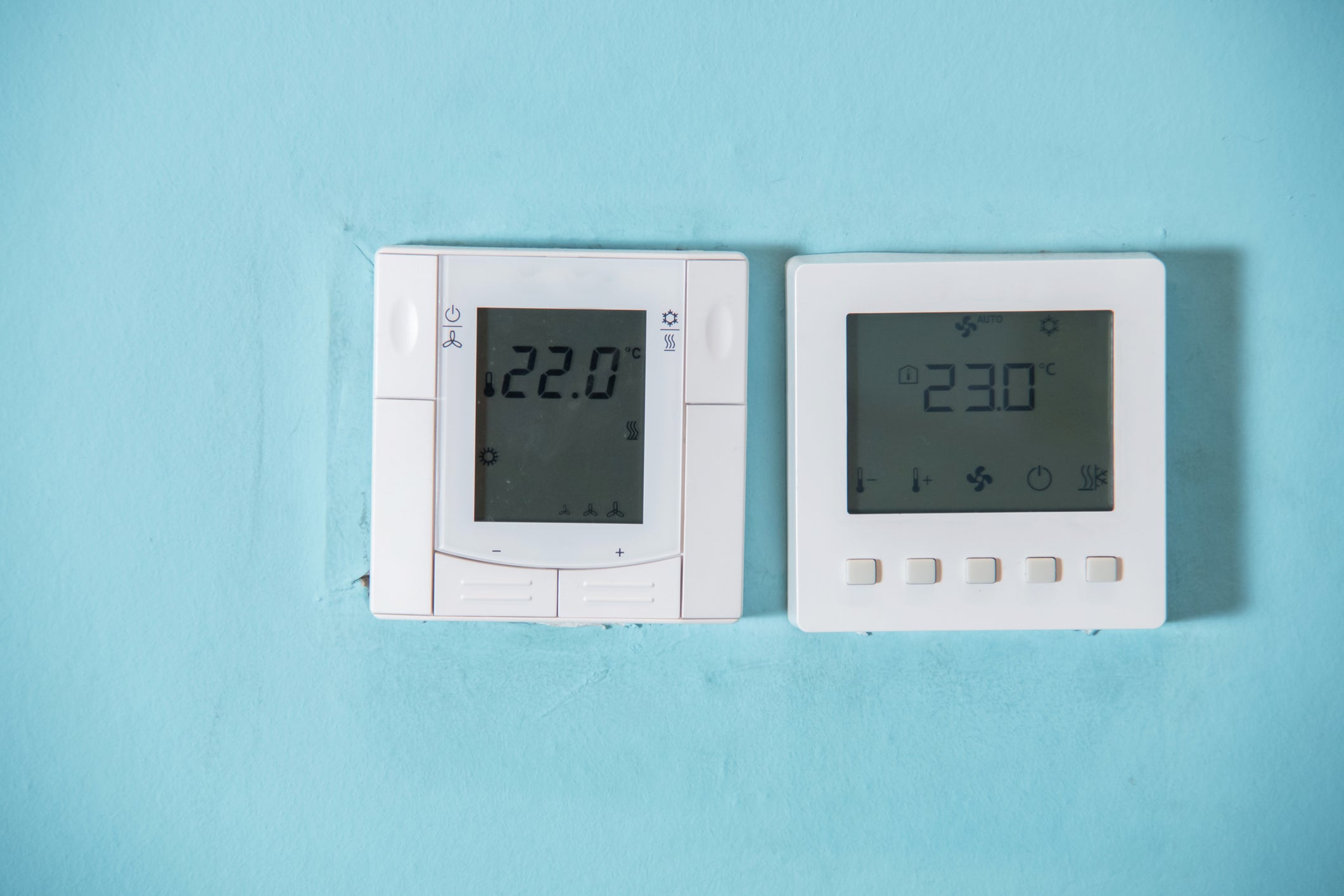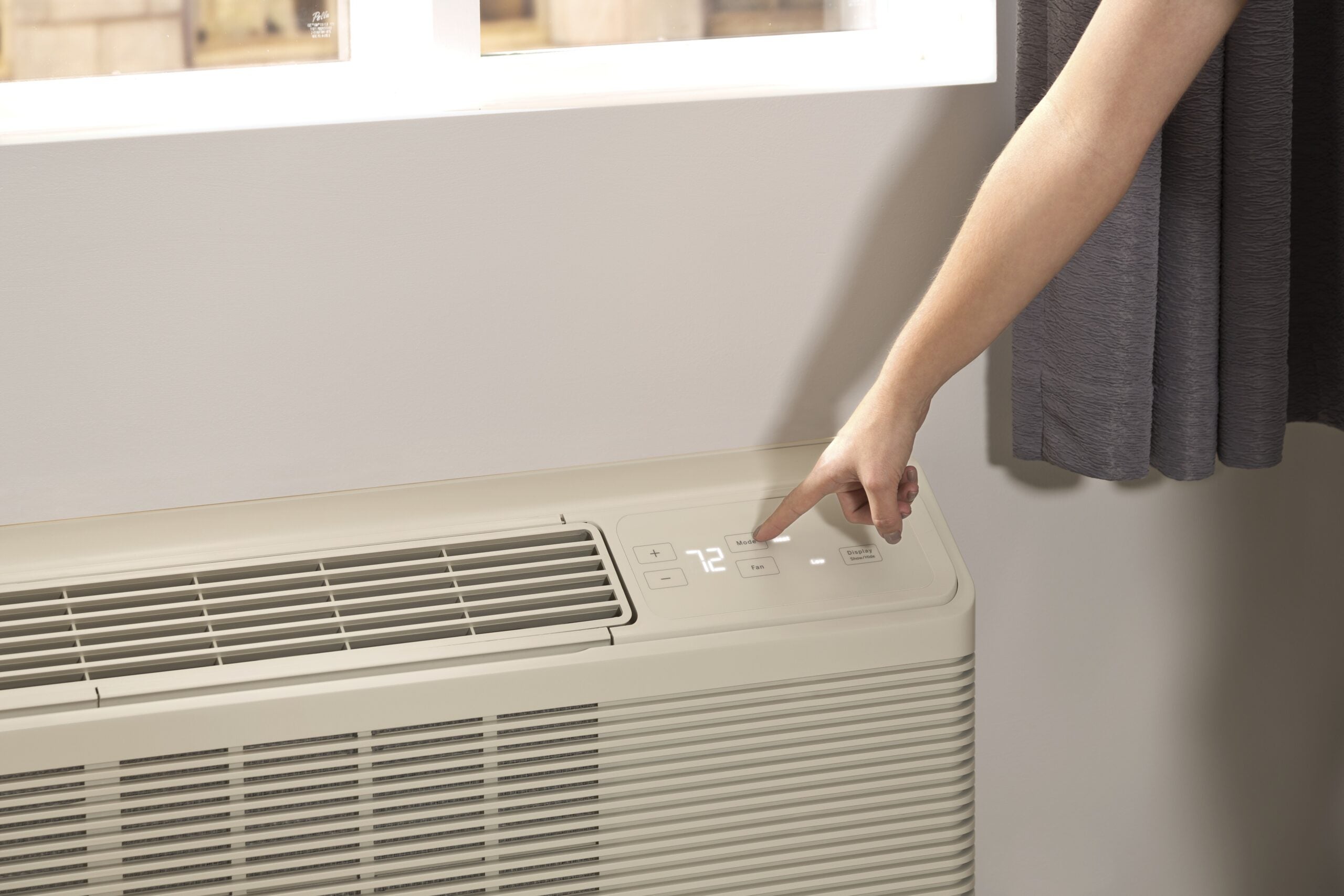It’s never a good feeling to wake up shivering or sweating in the middle of the night while staying in a hotel room with a thermostat you’re not familiar with.
Locating the thermostat is half the battle. Then you must decipher mysterious icons on the control panel and, if overseas, mentally calculate what the temperature should be in Celsius once you find it.
It used to be that hotel thermostats and their attached heating and cooling systems simply had “on” and “off” buttons with “cooler” and “hotter” temperature settings. Too cold? Turn the knob to the right. Too hot? Then crank it to the left.
Sign up for our daily newsletter
Email address
I would like to subscribe to The Points Guy newsletters and special email promotions. The Points Guy will not share or sell your email. See privacy policy.
Nowadays, hotel thermostats are far more sophisticated, often offering preset temperature limits, complicated menus and motion-controlled sensors that disable cooling and heating systems while guests sleep to cut costs and keep visitors from accidentally setting a temperature that’s too extreme for comfort.
With growing gas supply and energy concerns in Europe, hotels across the continent are weighing whether they should set tighter temperature limits on their thermostats, forcing guests to sleep in colder conditions in winter and warmer settings in summer.
While the eco-conscious way to cope would be to throw on another blanket or open a window, these solutions sometimes are not available or enough to keep you comfortable.
So, what should you do? If you’ve exhausted all available options for adjusting your in-room temperature and still find yourself feeling uncomfortable, try these two hacks to take control of the temperature.
Want more travel news and advice? Sign up for TPG’s daily newsletter.
The Honeywell hack
 Honeywell thermostats. ADIL CHELEBIYEV/GETTY IMAGES
Honeywell thermostats. ADIL CHELEBIYEV/GETTY IMAGES
Honeywell has been a longtime supplier of thermostats to hotels and homes. Its systems are commonly found in many chain hotels and motels, including Comfort Inn and Holiday Inn, so odds are you’ll encounter one while on the road.
If you are staying in a room with an older Honeywell thermostat, there’s an easy hack to bypass the preset temperature controls. While pressing the “display” button, press and release the “off” button or power icon. Then, press and release the up arrow or the “increase temperature” button to bypass the temperature controls.
Know, though, that following these steps won’t always work, as hotels with newer Honeywell Inncontrol thermostats have more control over thermostat settings thanks to built-in countermeasures put in place by engineers to get around this hack.
However, if your hotel has a standard Honeywell thermostat, you should have success overriding the preset settings.
Related: TPG’s best tips for traveling during a heat wave
The GE wall unit hack
 GE
GE
General Electric Co. is another major supplier of heating and air conditioning units for hotels and motels. Typically, GE systems feature wall thermostats, which guests use to control a heating and cooling unit that has had its controls disabled.
To get beyond the wall-mounted GE thermostat and adjust the temperature directly from the heating and cooling unit, carefully pop off the cover of the unit. Once inside, use the set of controls underneath the display board to set the temperature of the room before gently pressing the cover back on.
Related: Booked a hotel or rental property in Europe? It may not have air conditioning
Bottom line
Whether you’re traveling during a heat wave or in the heart of winter, there are times when you may find your hotel room’s temperature to be too uncomfortable to sleep soundly.
Fortunately, these two hacks may help you get around preset temperatures for a more pleasant stay.
Before resorting to these hacks, ask your hotel’s front desk for help, as they may have a way to adjust the temperature for you. Remember to also be careful about how you touch your room’s equipment so you don’t accidentally damage the heating and cooling unit.